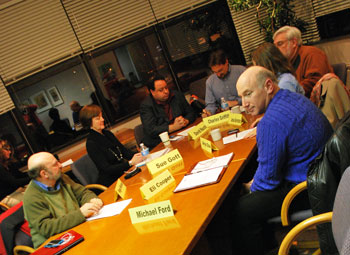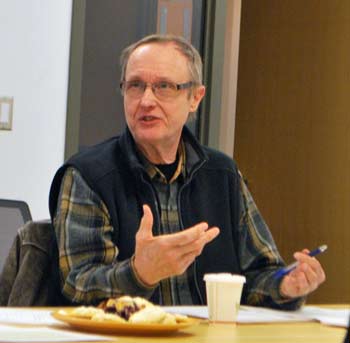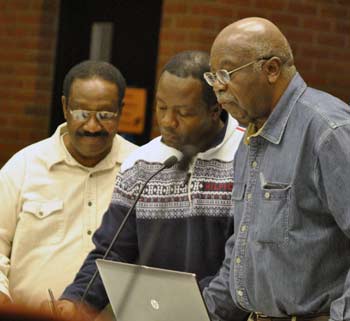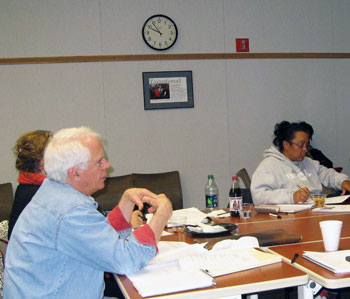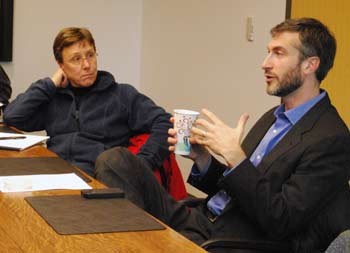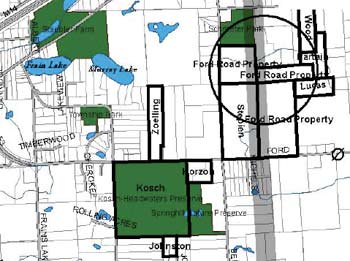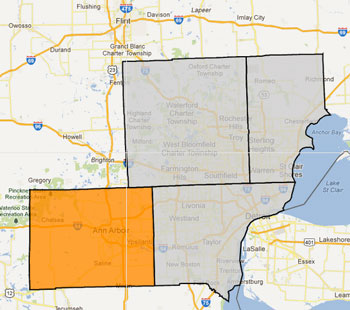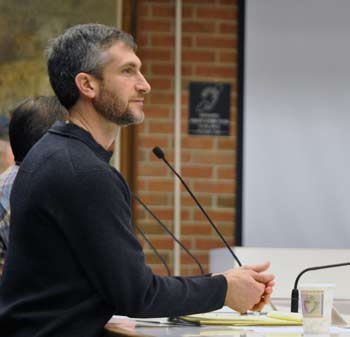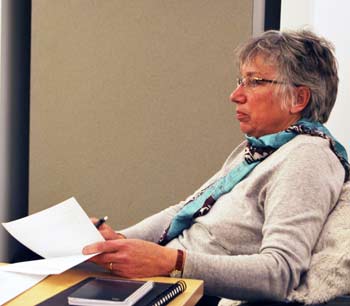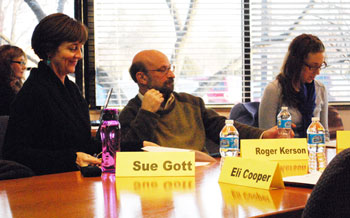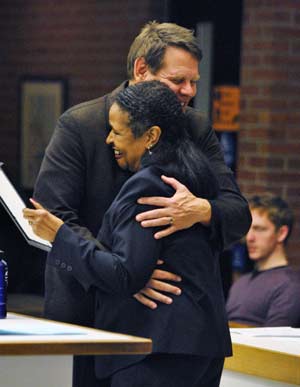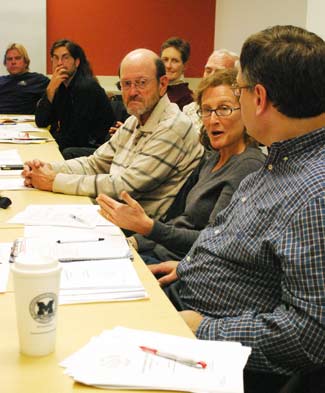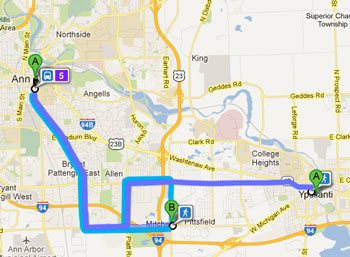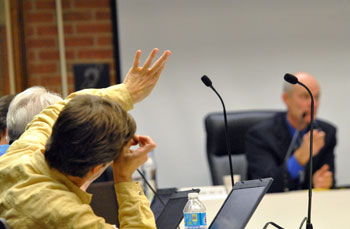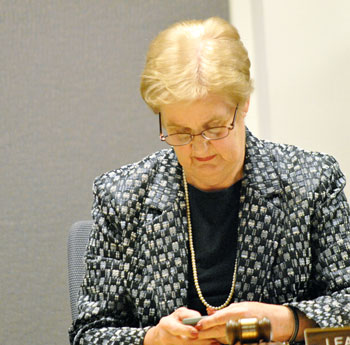City To Seek Feedback On Public Art Program
Ann Arbor city council public art committee meeting (Jan. 7, 2013): The five councilmembers on a committee looking at the future of Ann Arbor’s public art program will likely seek feedback on public art funding using the city’s online A2 Open City Hall.

From left: Ann Arbor city councilmembers Sabra Briere (Ward 1) and Sally Petersen (Ward 2) at the Jan. 7, 2013 council public art committee meeting. (Photos by the writer.)
The group discussed this approach at its second meeting since being appointed by the full council on Dec. 3, 2012. Sally Petersen (Ward 2) had proposed a survey at the committee’s first meeting on Dec. 11, but the idea had gained no traction then. She reintroduced the proposal on Jan. 7, saying she felt the committee needed better direction about public art and the types of funding residents might support.
A2 Open City Hall allows users to give open-ended responses to questions, to select priorities, and to give votes of support to comments left by others. It’s a relatively new system, and committee members talked about the need to promote it so that more people will participate. They plan to invite Lisa Wondrash, the city’s communications manager, to come to the next committee meeting and give advice on crafting questions for Open City Hall, as well as ways to publicize it. The Open City Hall system wouldn’t be the only way to get input, Petersen stressed.
Committee members include Peterson, Sabra Briere (Ward 1), Stephen Kunselman (Ward 3), Margie Teall (Ward 4) and Christopher Taylor (Ward 3). At this point, the consensus of the committee appears to be for a continued public art program that would not rely exclusively on the current Percent for Art funding model. That approach sets aside 1% of the budget for each of the city’s capital projects – up to a cap of $250,000 – for public art. The ordinance was enacted in 2007, but has been controversial for a variety of reasons. [.pdf of public art ordinance] It is now being evaluating in light of a public art millage that was rejected by 56% of voters on Nov. 6, 2012.
The council has asked this committee to make recommendations about the city’s public art program by Feb. 15, 2013. The group is exploring several options, including possible public/private partnerships and hiring a full-time administrator. There seems to be general agreement that if a Percent for Art approach is kept in place, it should be modified and only provide a portion of funding for public art. Tom Crawford, the city’s chief financial officer, attended the Jan. 7 meeting and reported that the accounting for Percent for Art is “very detailed and very difficult. It’s very administratively heavy.”
Moving away from Percent for Art funding would also give the city more flexibility on the types of public art it can pursue. Currently, because funding comes from capital projects, the artwork must be permanent and linked thematically to the fund paying for the project. That means that temporary installations, or events like the annual FestiFools parade, can’t be funded in this way.
Taylor wasn’t confident that the committee could craft a new plan by its February deadline. Instead, he suggested that the committee could provide concrete direction, but perhaps the city should hire a consultant or ask city staff to review the current program and make further recommendations.
During the Jan. 7 meeting, Kunselman gave a brief update on his plan to make a request of the state attorney general’s office for an opinion about the legality of Ann Arbor’s current Percent for Art program. The request must come from a state legislator, and Kunselman said that state Rep. Jeff Irwin – a Democrat from Ann Arbor representing District 53 – has “reluctantly” agreed to help if the council passes a resolution to seek the AG opinion.
Also at the meeting, committee members heard from four people during public commentary, who gave suggestions on how to proceed: Marsha Chamberlin and John Kotarski of the Ann Arbor public art commission; former AAPAC chair Margaret Parker; and Sarah Gay, an arts administrator who grew up in Ann Arbor. Kotarski, Parker and Gay all recommended hiring a full-time administrator for Ann Arbor’s public art program.
The committee’s next meeting is set for Monday, Jan. 14 at 5:30 p.m. in the first-floor conference room at city hall, 301 E. Huron. These meetings are open to the public. This Chronicle report also provides links to online resources that are being used by the committee, including information about public art programs in other cities nationwide. [Full Story]







